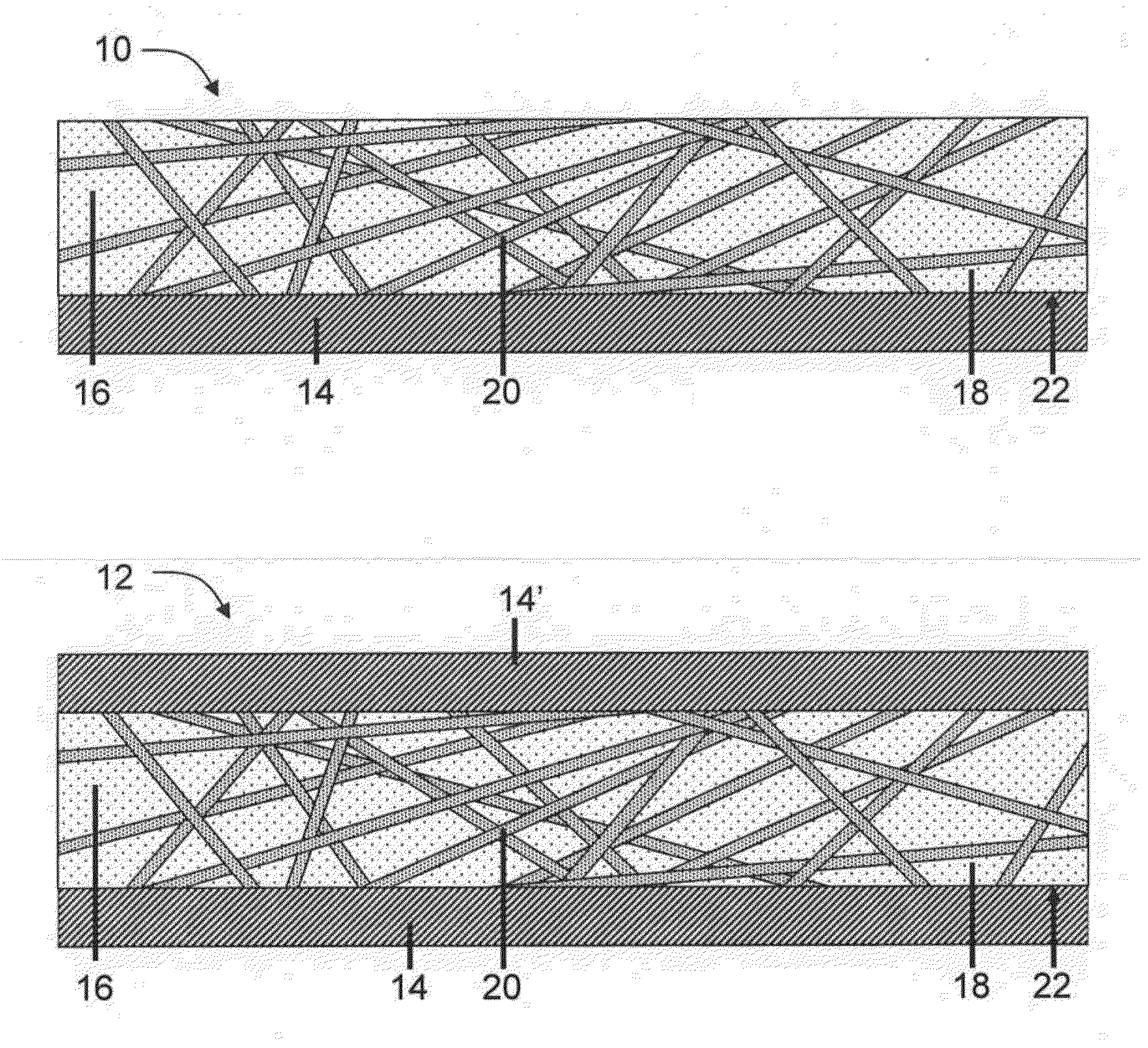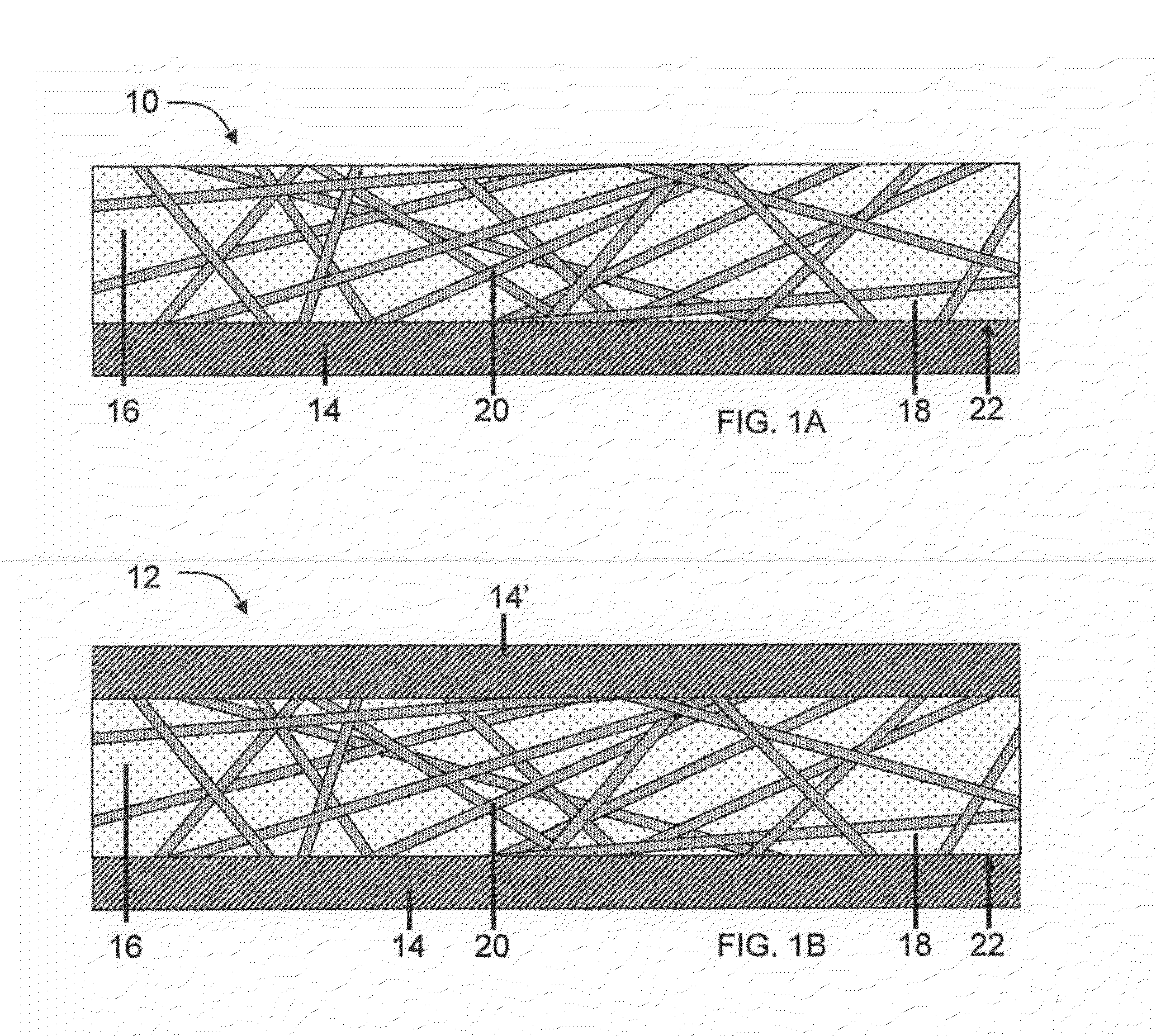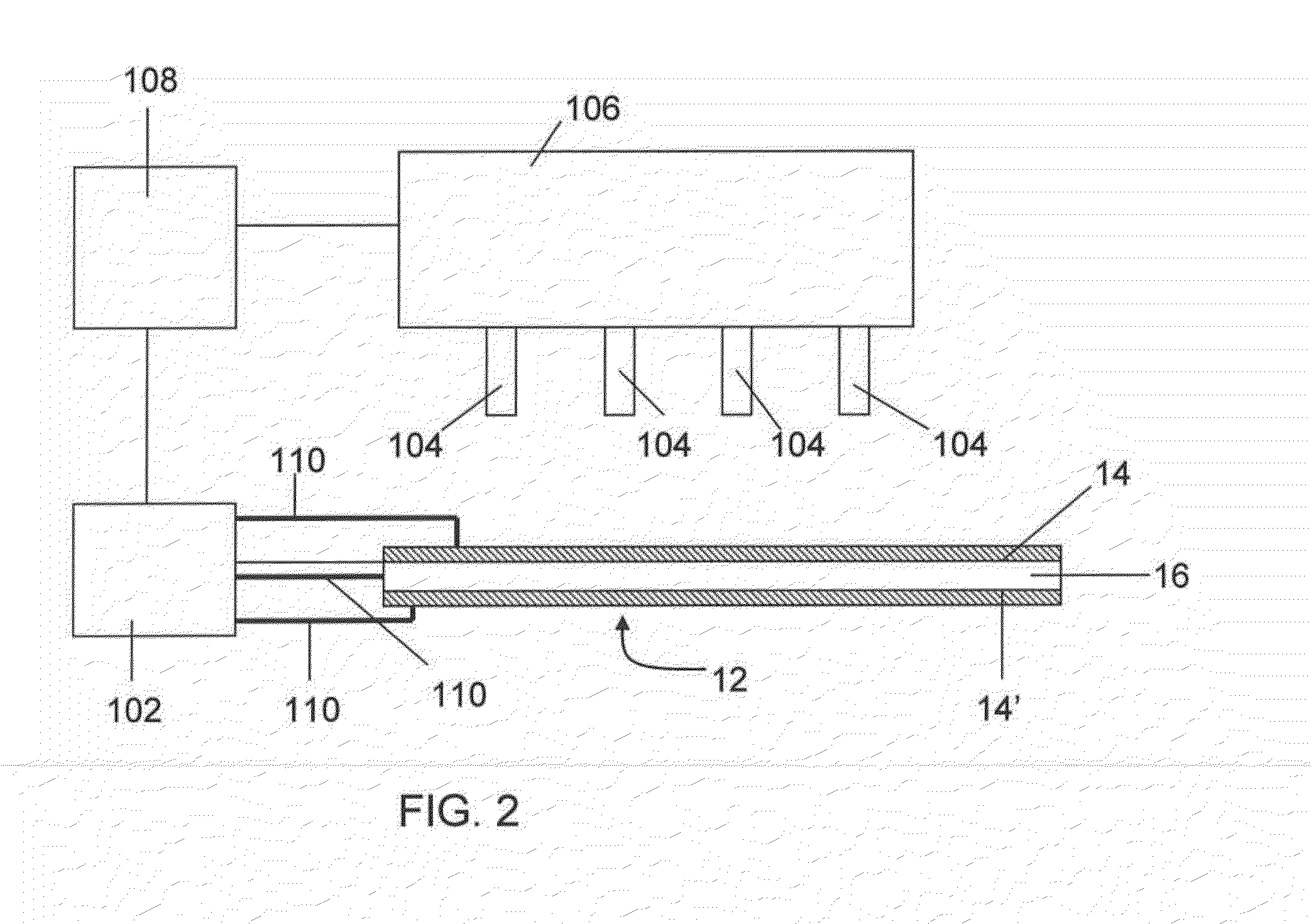Delamination resistant, weldable and formable light weight composites
a composite material, weldable technology, applied in the direction of film/foil adhesives, synthetic resin layered products, packaging, etc., can solve the problems of inability to meet another need, need (e.g., stampability) not meeting another need, and inability to compete design tensions, etc., to achieve excellent drawing capabilities and substantial weight savings
- Summary
- Abstract
- Description
- Claims
- Application Information
AI Technical Summary
Benefits of technology
Problems solved by technology
Method used
Image
Examples
example 1
[0182]The core material for the light weight composite is prepared by melt blending about 45 g polyamide 6 and about 72 g stainless steel fibers having an average diameter of about 3-10 μm and an average length of about 2-4 mm in a Brabender Plastograph mixer at 260° C., with a speed of about 20 rpm. The polyamide 6 has a density of about 1.142 g / cm3 and the steel has a density of about 7.9 g / cm3. After mixing for about 60 minutes, the admixture is removed from the Brabender mixer. It will be appreciated to one skilled in the art that longer or preferably shorter mixing times (e.g., less than about 30 minutes, less than about 20 minutes, less than about 10 minutes, or even less than about 5 minutes) may be used. Moreover, such mixing times may be employed for the other polymers of the present teaching. Thus prepared, example 1 contains about 18.8 volume % steel fibers and about 81.2 volume % polyamide 6 and has a density of about 2.411 g / cm3.
example 2
[0183]A core material is prepared using the same method as for Example 1, except the weight of the stainless steel fiber is about 102 g and the weight of the polyamide 6 is about 40 g. Thus prepared, the admixture contains about 26.9 volume % steel fibers and about 73.1 volume % polyamide 6 and has a density of about 2.962 g / cm3.
example 3
[0184]A core material is prepared using the same method as for Example 1, except the weight of the stainless steel fiber is about 35.4 g and the weight of the polyamide 6 is about 50.6 g. Thus prepared, the admixture contains about 10 volume % steel fibers and about 90 volume % polyamide 12 and has a density of about 1.816 g / cm3.
PUM
| Property | Measurement | Unit |
|---|---|---|
| thickness | aaaaa | aaaaa |
| tensile strength | aaaaa | aaaaa |
| tensile strength | aaaaa | aaaaa |
Abstract
Description
Claims
Application Information
 Login to View More
Login to View More - R&D
- Intellectual Property
- Life Sciences
- Materials
- Tech Scout
- Unparalleled Data Quality
- Higher Quality Content
- 60% Fewer Hallucinations
Browse by: Latest US Patents, China's latest patents, Technical Efficacy Thesaurus, Application Domain, Technology Topic, Popular Technical Reports.
© 2025 PatSnap. All rights reserved.Legal|Privacy policy|Modern Slavery Act Transparency Statement|Sitemap|About US| Contact US: help@patsnap.com



